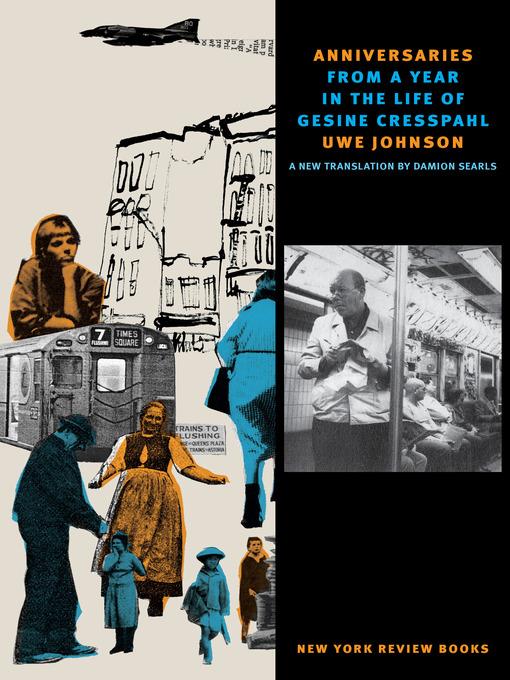
Anniversaries
From a Year in the Life of Gesine Cresspahl
- اطلاعات
- نقد و بررسی
- دیدگاه کاربران
نقد و بررسی

June 1, 2018
Formatted as a diary contemporaneous with the times and written when German author Johnson was living in New York City, this magnum opus featuring German émigré Gesine Cresspahl opens on August 21, 1967, and ends on August 20, 1968. Thus, it spans a watershed year in American and world history. Huge in every sense of the word.
Copyright 2018 Library Journal, LLC Used with permission.

September 1, 2018
"Das war es denn wohl. That takes care of that." An overstuffed masterwork of late European modernism by German writer Johnson (1934-1984).Hailed by Günter Grass as the most significant East German writer, Johnson left his homeland in 1959, dying at the age of 49 in England. From 1966 to 1968, though, he lived in New York, where he wrote the tetralogy called Jahrestage. Likened to Joyce's Ulysses, it's really a kind of Joseph Cornell box in words, a vast montage stretching from August 1967 to August 1968. The narrator, Gesine Cresspahl, lives in self-exile on the Upper West Side, working as a translator, trying to raise a daughter, Marie, by herself. Gesine is too young to have been complicit in the crimes of the Third Reich, but she saw them unfold, enabled by those who stood by, some of whose uniforms have merely changed colors in the years since the war ended even as other things have remained the same. The Levy's Jewish rye ads on the New York subway, for instance, bear ominous signs of old: "There tend to be swastikas drawn on these posters," remarks Gesine after reflecting on both a moment of wartime history and the opening of baseball season. "It's true that they aren't drawn correctly...but tonight I saw one more of them than I did this morning." Past feeds into present and flows backward as Gesine travels in time and space to places like New Orleans and San Francisco in a time of torment. She sighs, "This summer is over, it's now our future past, that's what we can expect from life." Her diary--which is to say, Johnson's 2,000-page novel--touches on Vietnam, World War II, postwar Eastern Europe, the inhumane conditions of that New York subway system and the humanity of its riders ("Marie was always given a greater amount of breathing room than she needed"), the triumph of despair, and countless other topics.A rich book to be read slowly and thoughtfully, from a writer too little known today.
COPYRIGHT(2018) Kirkus Reviews, ALL RIGHTS RESERVED.

Starred review from September 24, 2018
In this sprawling multivolume novel, the events of one woman’s life over the course of a year in New York hearken back to several decades’ worth of German history and political upheaval. Gesine Cresspahl is a German woman in her mid-30s who lives with her daughter in New York and works for a bank. Johnson’s novel opens in the late summer of 1967, and proceeds through the following year day by day, with all of the political turmoil that that entails—both in the United States and behind the Iron Curtain. Interspersed with this are occasional meditations on the New York Times and, more prominently, the story of Gesine’s family over the course of her early life. In this way, Johnson covers the rise of fascism in Germany, the wartime experience there, and the separation of the nation into East and West. The novel’s 1967 segments occasionally trace the aftereffects of fascism and sometimes parallel the tumultuous American politics of the moment, including the assassinations of Martin Luther King Jr. and Robert F. Kennedy. Johnson keeps the line between past and present murky, which seems in keeping with his larger points about the nature of history as it’s remembered versus history as it’s lived. The growing political consciousness of Gesine’s daughter, Marie, provides a wonderful counterpoint to the novel’s themes of crises personal, national, and global. This is a haunting and unforgettable portrait of the momentous and the historical.




دیدگاه کاربران